Corellas immediately win hearts with their exotic appearance and small size. Like any pet, the Corella parrot needs special care, feeding, and maintenance; any owner must know this. You can observe all the features; the parrot will delight for many years with its bright crest and mischievous disposition.
Peculiarities of keeping a Corella
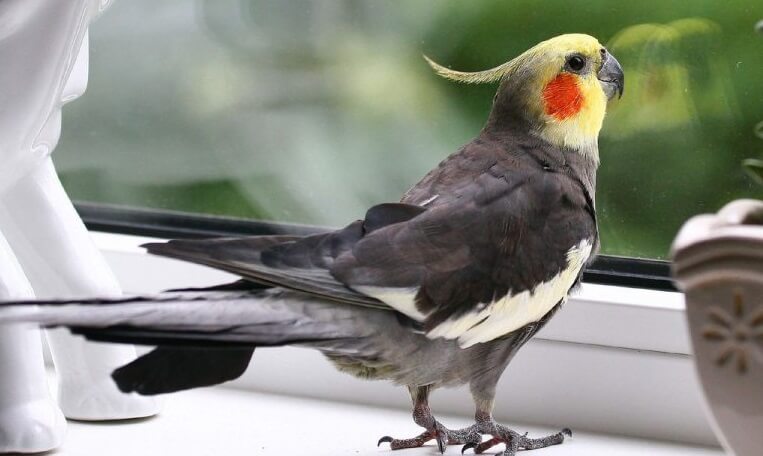
Before getting a new pet, decide whether it suits you and your family. The peculiarities of this species will be a plus for some people, while others will be nervous.
Please consider this before purchasing a Korella so you don’t have to stress yourself or your bird.
- 1. Corellas are noisy and active. If you need to know if your Corella parrot is talking, you can be sure that with proper training, it will speak, and even more so. No, they will not incessantly broadcast but prepare for morning singing and evening lullabies. Not all people tolerate harsh sounds at this time of day.
- 2. They are very fond of family attention and do not tolerate long periods of loneliness well. If you have a hectic schedule and are away most of the time, this pet is not for you. Multiple birds need less attention, but their level of socialization will also drop significantly.
- 3. There will be quite a lot of garbage from the nymph. The bird has its own house and will undoubtedly make its order there and throw everything unnecessary outside the cage. Of course, feathers will fall out and fly in all directions. During free walks, a Corella may well find something and chew something.
- 4. Buying a bird is not the last monetary investment. It will also need a cage with all the accessories, regular food purchases, unique toys and broken things in the cage, periodic check-ups at the vet, and even treatment. The Corella will be a full-fledged family member and require the necessary care.
- 5. Knowing how long a Corella lives at home is also essential. With a good standard of living, this pet can live for more than 20 years, and it will need care all these years! Realize that this is not a toy for a few years; the parrot will be with you for a long time. The Corella may well witness you graduating from school, finding your soul mate, and your children graduating together.
You will soon have an excellent, cheerful, and incredibly loyal pet if nothing scares you. He will greet you cheerfully, wake you up in the morning, and sit on your finger. All that remains is to prepare his future home.
Corella sings “My Neighbor Totoro.”
What are korellas like
The natural coloration of these parrots is represented by a gray body, yellow head and bright orange cheeks. In the course of artificial breeding, new, brighter colors were bred. Now breeders can meet korellas with colors:
Due to crossbreeding of different colors of korellas, more and more often unusual and original colors are obtained. But most of them are still gray. This coloring is considered natural. The brightest colors are obtained from crossing spotted representatives with other pigment carriers.
What should be in the cage for feeding and care of Corellas
Care for a Corella at home depends largely on its cage. It should be of sufficient size. Choose a cage of at least 60 centimeters in height and 50 in width. It is desirable that the bars were located horizontally or had several horizontal bars – the bird likes to climb very much, and on the vertical it will not be comfortable. The size of the gap between the bars is recommended 1.9 centimeters, and the bar itself should be steel. Lead and zinc bars spoil the health of all birds because of the poisons released.
The conditions of keeping korellas additionally require and special inventory. It is obligatory to have:
- A drinker and 2 feeders. One will be for grain dry mixes and the other for fresh produce and wet food;
- A couple of petrels;
- Swing;
- A nest or a house;
- Special toys. These can be ropes, rope, plastic or wooden ladders, special balls and a mirror.
Additionally, you can install a special screen on the cage to prevent food from spilling out of the cage when the nymph is eating. It is useful to have special cleaning products in your arsenal. With them, cleaning the cage will be much easier, and in addition, such products are also good disinfectants.
Choosing a pet
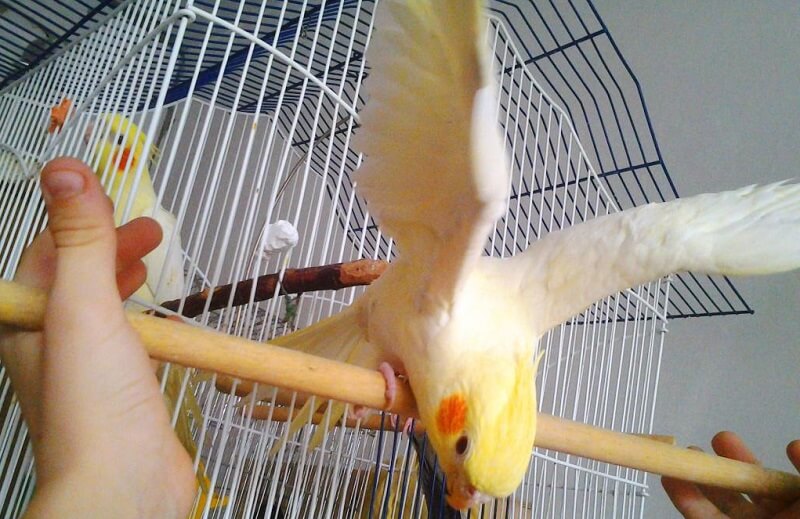
When we have a ready-made home for a Corella, we can choose our bird. Where to choose it is your personal preference. It is more reliable to contact breeders who are engaged in breeding this particular breed of birds. They will be able to learn all the nuances of keeping at home, clarify what the bird does not like, make a balanced diet and look at the parents. Moreover, there will be no need to be tormented by questions about how to determine the sex of your nymph. The breeder will definitely answer this question, because he knows from his own experience how to care for a Corella at home.
Explicit sexual signs in korellas appear from 3.5 months, but you can definitely say only after a year. How to distinguish a male and female korella parrot from the photo is quite possible. The male is usually brighter in color than the lady. Differences are also present in the crest. The female has a crest wider and shorter, and the boy’s feathers will be longer, and the crest itself is narrower. Differences are also present in behavior. Males are more active, sociable and like to sing. Girls are not so talkative. Boys, when sitting, rise high on their feet, and girls have a bellybutton almost at the same level as their feet.
The best age for a Corella to move to a new family is 3-3.5 months. The chicks are old enough to be separated from their parents and young enough to be socialized with a new family. It is quite possible to find out the approximate age on your own. The peculiarities of each growth period are reflected in the color of the plumage, the color of the eyes, the color of the legs, the folds on the legs and the smoothness of the beak.
Younger Corellas are slightly brighter and lighter in color, while adults are richer and darker. The crest on juveniles is not as thick as on mature individuals. The eyes of juveniles are almost black, but with age the iris lightens. The beak and feet of young birds are pink-gray, and the older the nymph becomes, the less pink and more gray appears on the beak and feet. Age is also indicated by the smoothness of the beak. In very young birds it is smooth, but years of life make it rough.
Separately, attention should be paid to:
- Feather quality. It is not worth buying a chick during the molt period, because the body is already stressed and moving can seriously damage its health. Their first molt takes place in half a year to 8 months. The feathers should lie one to one, with no splotches or slips.
- Eyes. They should be round, not squinting in any way. There should be no discharge or flaking on them. Pay attention to the shine of the eyes.
- Condition of the beak. It should not be deformed or injured, and should be free of any growths. The nostrils should be dry and free of any discharge.
- Feet. Nymphs have 4 toes on their feet. 2 “looking” forward and 2 backward. The claws should be smooth and neat.
- The cloaca should be clean, as should the tail. Fecal residue on the cloaca and tail is a clear signal that the Corella is unhealthy.
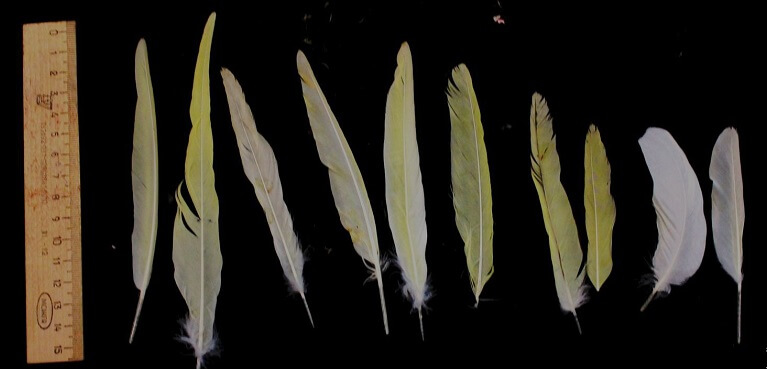
In any case, the choice of a pet should be independent, because you choose a friend for a very long time. It is better to transport the parrot in a special carrier for birds. When the nymph is at home, carefully transfer it to the main cage and do not touch it at all for some time.
Adaptation to a new place
The place should be fully prepared for the move-in period. It is not necessary to hand carry the Corella out of the carrier and into its new home. Organize a corridor by simply opening the carrier and cage door and placing them opposite each other. The bird should be able to move from one place to another on its own.
It will take time to get used to your new home. It will take at least 24 hours and may take up to a week. The owner should never disturb the parrot during this time. The new environment and so frightens the animal, and excessive attention will only aggravate the stressful state of the korella. After adaptation to the place you can establish contact with your pet..
Taming the Corella
Taming does not usually require anything special or complex skills. If the bird was purchased from a breeder, it is socialized from the beginning. Individuals from pet stores may be a little less attuned to humans, but this is also solved within a few weeks.
At first, just stay near the nymph’s cage for 20-30 minutes a day and talk to it. Increase the amount of time each day. If there is no negative reaction and the bird approaches you, give it a treat through the cage. After a few days, open the cage and slip the tasty treat not far away so that the nymph becomes interested and comes to take it. Then place the treat on your open palm so that the bird will climb onto your hand. When the Corella will climb on your hand without fear, turn your hand so that it is comfortable to sit on your finger, and take the parrot out of the cage. This is how you can begin to tame the parrot.
Now the pet can be stroked and “fluffed”. You do not have to worry about what korella parrots like. They are very fond of affection, attention and goodies. The korella parrot is not particularly demanding to care, maintenance and feeding. But it is very demanding to communicate with its new family. She will need at least an hour of your attention every day to not lose the level of socialization.
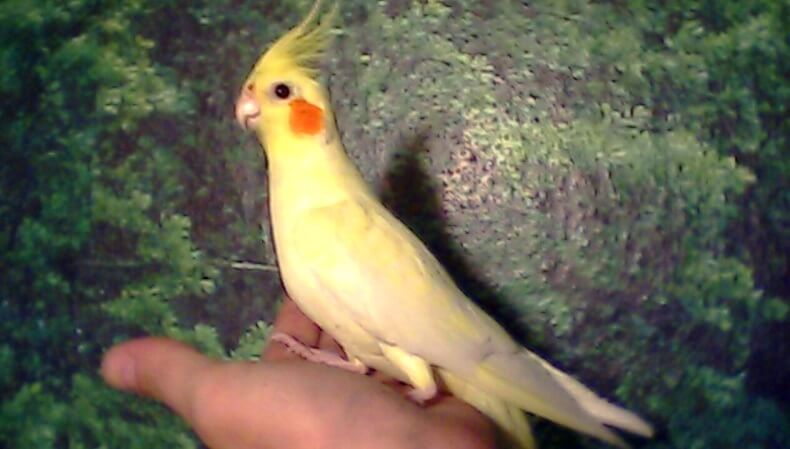
These birds are very good at learning various tricks and human speech. Males are more likely to talk, whistle and sing. Girls are more modest and silent, but a lot depends on how often you talk to her. Any animal is attuned to dialog, and the more you talk to it, the more it will want to answer you.
The foundation of proper training is praise and affection. Never swear at a bird. This will only frighten it, but it will not understand what exactly upset you. Repeat the desired words or tricks systematically for 20-30 minutes a day. Any wish fulfilled at once positively encourage – praise with words, pet, give a treat..
When practicing commands, always accompany the action with one specific word. For example, when teaching to sit on the finger, say “sit”, pass your finger under the paws (so the Corella will reflexively move its paws to the finger) and immediately give a tasty treat.
Nutrition

A balanced diet will be the main guarantee of excellent health and longevity of the nymphs. The ideal option will be a ready-made grain mixture for Corellas and similar parrots. Do not be frightened that they contain a lot of grass, grain or other granulants. They should be the basis (at least 65%) of the food.
If the main feed consists of whole grains, it can cause liver complications. Whole grain feed contains too much fat, which can undermine the health of the bird. Additionally in the diet should be present fresh fruit or vegetable, cooked beans, sprouted grains – these are natural sources of trace elements, water and minerals. Be sure to install a special chalk in the cage, it will be a source of calcium. It is especially necessary for females.
There is a list of forbidden foods for Corellas:
- Virtually all heat-processed foods.
- Any sweet, spicy and fatty foods.
- Mushrooms.
- Raw legumes.
- Onion.
- Avocado.
- Mango.
- Persimmon.
- Papaya.
- Chokecherry.
- Leaves from tomatoes.
- Chocolate.
- Alcohol-containing products.
- Caffeine-containing products.
Change the water daily, as this is the most common source of disease in Corellas. It often contains leftover food or droppings, which are sources of viral and fungal cultures. All raw food should be removed after 3-4 hours and thrown out, even if the bird has not finished eating. Such food spoils and molds very quickly. Do not give more than one slice of any fruit or vegetable.
Introduce each new product gradually. Do not overload the bird with unfamiliar foods. Firstly, it can give a negative reaction from the GI tract (liquid stools), and secondly, the pet may refuse unfamiliar food.
Peculiarities of care for a Corella
Corellas are not very demanding to keep. It is important that they have no dirt, enough light and always have fun. Clean the cage regularly, and if you use bedding, choose only natural fillers. Sawdust is best.
Light and daylight hours are important. Do not place the cage in a dark corner, but do not place it close to a window. Direct sunlight is undesirable. The duration of the daylight hours is 10-12 hours. It can be corrected by covering the cage incompletely in summer, and giving additional illumination with lamps in winter. Too long a day can make the bird more aggressive, and too short – apathetic.
Nymphs are contraindicated drafts and sudden temperature changes. Temperature should always be within 20-25 °C C. Birds need bathing in water at a temperature of 30-35 °C C. This can be both baths and just playing with water flowing from the tap. It can be baths, and just play when the water flows from the tap. Corellas love bathing.
There are no particular differences between keeping boys and girls. Differences may be present in nutrition, since even single females often carry eggs, they need additional calcium. Females also need a house or nest imitations for comfort, but these items will provoke the laying of empty eggs.
Health
In general, this breed is not prone to disease and is one of the long-lived breeds. Any diseases occurring in korellas are the result of negligent attitude to the pet. Be attentive to the behavior of the bird, because it will not be able to tell you that it is not feeling well
What health impairments there may be:
- Feather loss.
- Feather and skin parasites.
- Disturbance of bone and beak structure.
- Infectious diseases.
- GI disorders.
- Obesity.
- Muscle atrophy.
- Avitaminosis.
Immediately sound the alarm and run to the clinic if the bird is already obviously ill. Most diseases are caused by poor or inappropriate nutrition and stress. Signs of health problems can be traced in behavior. Corella becomes more aggressive, active or on the contrary – very sluggish and constantly sleepy.
The pet may refuse all food and liquids. Check for breathing problems, nasal, eye and cloaca discharge. Never treat a Corella on your own! Trust the examination and treatment only to a specialist!
Corella breeding
The breeding of Corella parrots at home is easy. It is not recommended to breed chicks for individuals younger than one and a half years old, although females are able to breed as early as 8 months. At such a young age, the girl will only undermine her health with stress, and the chicks will not be able to fully breed.
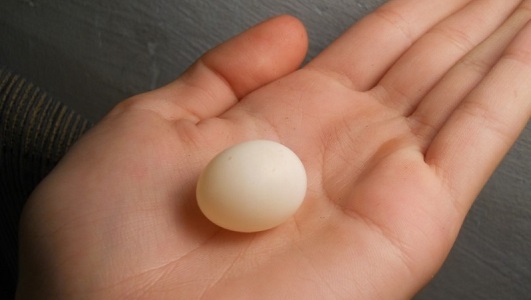
The egg may be unfertilized or stop developing at some stage. This happens and you should panic. Often not all eggs are fertilized, but they do not need to be taken out of the nest – they help to keep them warm.
During the mating season and after egg laying, it is very important to supplement the diet with calcium and “fresh” vitamins. The mom-to-be has a serious calcium deficiency and needs to replenish it. Corellas will incubate and care for the chicks together. The chicks will hatch in 2.5-3 weeks.
When the babies emerge, there should be plenty of wet food in the feeder so that the parents are able to feed the young. The chicks develop rapidly and in a little over a month they will be quite independent. However, you can say goodbye to them only at the age of 3.5 months.
Video: what you need to know before getting a corella




